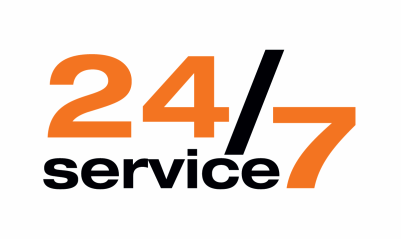By Jack Cumming
In the beginning, there was chaos. It was the year of the pandemic. Chaos and challenge were on the agenda as people of goodwill and open hearts struggled every day to cope. It took courage just to come to work. We learned who truly mattered, who was essential, and who was merely “important”. Yet, the spirit of hope hovered over the chaos.
Now is an exciting time to be involved in senior living. Vaccinations are well underway. We can anticipate the day in the not-too-distant future when a semblance of normalcy will return. We may continue to mask for a time, “out of an abundance of caution,” as people like to say. But already we are beginning to see signs that the tide of infection is turning. It’s obvious that as more and more people are vaccinated, those scary charts that now headline our daily news will turn in a happier direction.
Who’s Essential?
Some things, though, are likely to persist. Zoom knowhow is here to stay. Other changes we can hope will persist. For openers, there’s the now self-evident perception that it’s the frontline workers who are essential. Let’s recognize them and let them know and feel their importance. Moreover, let’s give them opportunities that they’ve never had before to educate themselves, to advance, and more. We can empower those workers to make the industry shine.
Adapting to the pandemic has shown us the resilience of both those who work in our organizations and of the customers they serve. Adapting has meant accepting change. Our hope is that this fresh openness to change persists to advance the lives of employees, residents, and other stakeholders. The opportunities are vast as this year of 2021 begins to take shape. Let’s seize the future and make it ours.
Rewarding Workers
How can we make this more than just a pep talk? We can start with programs to help the workforce become more productive and better compensated. We’ll soon be sharing ideas that may inspire managements to bring such a change into being. No longer should senior living be considered a job that people settle for. We can make this industry the go-to industry for young people looking to the future.
Technology was already beginning to take hold in senior living when the pandemic upended everything. Now post-pandemic, there is a new openness to technological innovation. We see increasingly robust and secure Wi-Fi networks taking shape throughout the industry. Thoughtful vendors are introducing new applications that can make dreaded paperwork, not to mention the fax machine, a thing of the past. As senior living embraces technology as empowerment, instead of as a threat to human connections, vendors will step up to take advantage of that new openness. Demand fosters solutions.
Vitality Extension
We are also seeing an astonishing number of people who a decade ago would have been ready for assisted living or near-assisted-living now assuming positions of considerable importance for our nation. Dr. Fauci is 80. President Biden is 79. Treasury Secretary Janet Yellen is 74. Nancy Pelosi is 80. Mitch McConnell is 78, and his counterpart, Chuck Schumer, is a youngster at only 70.
The times are changing. The vitality extension is on full display. A side benefit of this combined longevity and vitality revolution, which has added an entire generation of active living to our lifespans, is that the time of old age dependency has been sharply reduced.
Two Futures
Two futures for senior living emerge from these medical and lifestyle advances. One prospect is to serve the frail and failing. That is a market that is declining as medical advances defer incapacity leading to more cliff-like endings. Thus, the care model is coping with shorter and shorter stays and a faster marketing churn. Industry sage, Ryan Frederick, likens that to running on a treadmill with the runway length shortening, the speed accelerating, and the incline increasing . . . all at the same time. Length of stay is the runway, labor cost is the accelerator, and increasing acuity is the incline.
The other prospect is to open senior living beyond just residence for old people with all “old” has traditionally brought to mind. This is the bigger challenge for an industry that began with charitable care for aging teachers, church workers, and other nurturing professionals. Care has been a central premise for eldercare. So it’s hard to reconcile with a new generation of vital seniors whose expectations for old age are different.
Paths Forward
The opportunities are vast with either prospect. If we follow the track of caring for short-termers nearing life’s end, we can envision a franchise-type opportunity, much like Airbnb, to empower nurse-led mom-and-pop small care homes to give those who need help a homelike setting for their last days. Developing a trusted nationwide brand-identity can give credibility to family-run care homes. Some may see scale as a better approach, though it’s hard to function within the increasingly tight pincers of declining reimbursements and escalating labor costs. Enabling people to have a chance to work for themselves doing what they love strikes me as more likely to rise to the need.
The other track leads inexorably toward conventional multi-family or HOA family home subdivisions with amenities onsite and, most likely, contracted out. Attractive amenities can include purpose-built spaces to be leased to restaurants (subscription and per meal), care services (child, disabled, and older adult), primary care, etc. The key to attracting customers is to make buying prestigious. Tesla has made electric cars prestigious and that gets all the buzz even though the Chevy Bolt is cheaper. If we can make a new inclusive living model prestigious and enviable for people, customers will find their own way to move in wanting to share in the bragging rights for where they live.
Sticking with the status quo does not seem promising. That straddle strategy, in which an enterprise seeks to portray a care culture as a lifestyle choice, is likely to continue to lose market share. In a world in which digitalization is central to survival, drift and deferral is not a promising strategy. The times call for change and action.
Our Optimistic Future
As this new generation of vital elders comes into its own, senior living will have to change to embrace and welcome them. This will unleash opportunities for visionary leaders to transform the industry into what they themselves would want and would choose. The pandemic will be leaving us more slowly than we would like but more rapidly than we have been led to expect. The crisis of COVID-19, though, has shown us what we are capable of.
The best years for visionary leaders are near term. The pandemic has prepared our world to accept the pace of innovation that will make the coming decade sparkle. As we turn from crisis toward opportunity, we can take pride in what we’ve overcome as we look forward to new opportunities with fresh vigor and a renewed commitment to our purpose and mission.
Click here to read comments and join the conversation about this article.








